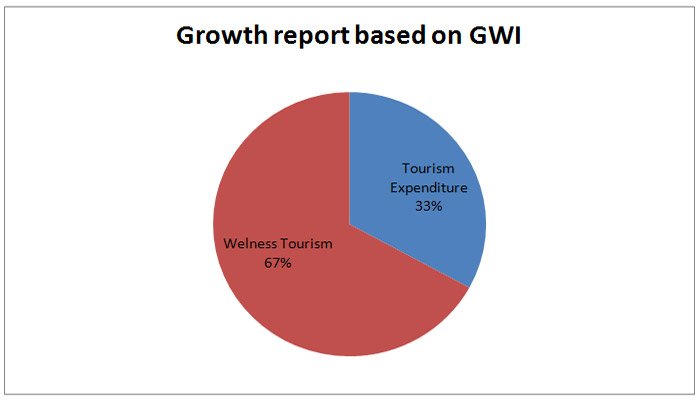Compiled by Ayan Das
Wellness Tourism can encourage people to travel beyond over-crowded destinations, spend more and enjoy new experiences. It is growing twice as fast as the tourism sector overall, accounting for around 830 million trips a year and is worth an estimated US$639 billion, according to figures released at World Travel Market London.
Based on a report by the Global Wellness Institute, tourism expenditure grew 3.2 per cent in the past two years to 2017, but wellness tourism was up by 6.5 per cent, which was more than the global GDP and it’s growing in every corner of the world. Europe accounts for the highest number of wellness trips, but spend is highest in North America, which accounts for over 1/3rd of the world’s total. Asia has the fastest growing market, due to the largely expanding middle class and explosion of tourism in this region.
Some of the examples of wellness tourism range from boot camps in United Kingdom to the spiritual ceremonies in India to medical check-ups in Malaysia and Thailand. Next year, fitness brand Equinox will open a hotel in New York’s New Husdon Yard district, and it has 75 more in the series.
Those who aren’t necessarily travelling for wellness but want to maintain their health while travelling, or simply want to take part in wellness campaigns during their trip, typically splurge eight times more than those who itinerant chiefly for wellness. As wellness tourists are generally better cultured, well-travelled and eager to try new experiences, they classically expend 53 per cent more than the typical international traveller and 178% more than the average domestic tourist.
To detain this mounting, beneficial market, some destinations, such as Bhutan in Asia and Costa Rica in Central America have chosen to centre heavily on wellness tourism, while others such as in China, are creating wellness products, where hot springs are adding conventional Chinese medicine treatments. The number of wellness tourism trips will nurture by 8.1 per cent annually to accomplish 1.2 billion in 2022.
“Growth has been driven by an expanding global middle class, growing consumer desire to adopt a wellness lifestyle, rising interest in experiential travel, and increasing affordability of flights and travel options,” utters GWI researchers.

The trend from “Me” to “We” has seen Westin Hotels & Resorts systematize actions such as beach clean-ups and widen a ‘Thread Forward’ programme to up cycle used hotel bed linen into pyjamas for children in need. There’s also a budge away from “consuming” to “contributing”, as travellers are more aware of their contact on the communities they pop in.
Finally “We believe that wellness tourism can offer relief to destinations that suffer from overcrowding and the problems this brings. It has the potential to attract people off season and take them away from the most well-known, overcrowded destinations and into less well-known areas.” added Ms Johnston.


